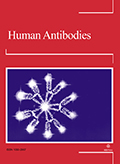Authors: Erhabor, O. | Ibrahim, D.G. | Udomah, F.P. | Adias, T.C. | Imoru, M. | Abdulrahaman, Y. | Zama, I.I. | Ibrahim, K. | Hamidu, A.M. | Onuigwe, F.U. | Bagudo, A.I. | Buhari, H. | Erhabor, T.
Article Type:
Research Article
Abstract:
BACKGROUND: World Health Organization statistics identifies that there are about 150 million people with diabetes mellitus worldwide and suggest that this figure may double by 2025. OBJECTIVE: This research was conducted to determine the status of full blood count, zinc and manganese levels among Diabetic patients attending Specialist Hospital, Sokoto. METHODS: The participants were divided into two groups; 58 diabetic subjects and 29 non-diabetic controls. Five milliliters of blood were collected into EDTA and plain containers for full blood count, serum zinc and manganese analysis. The FBC investigation was carried out using automated Mythic
…Haematology analyzer (Orphee, Switzerland) while Zn and Mn investigations were carried out using Atomic Absorption Spectrometry (AAS). The FBC, Zn and Mn status of both control and subjects were compared statistically. RESULTS: The results obtained in this study showed a significant increase in RBC, PCV, Hb, Basophils, Eosinophil, Lymphocyte count and Manganese levels of diabetic subjects (p ⩽ 0.05) when compared with controls. There was no statistically significant difference in the other FBC parameters and Zinc levels between diabetic subjects and non-diabetic controls (p > 0.05). There was a statistically significant difference in the Hb, PCV and lymphocyte of diabetic patients based on gender (p < 0.05). FBC, Manganese and Zinc have no effect based on age group, while other socio-demographic factors also have no effect on the FBC, Manganese and Zinc parameters of diabetic patients. The study also showed no statistical difference in the FBC, Manganese and Zinc of smokers and non-smokers (p > 0.05, respectively). In conclusion, this research shows that some haematological parameters (RBC count, Basophils, Eosinophil, Lymphocyte, Hb and Manganese) of the diabetic patients are significantly higher compared to non-diabetic controls. Marital status had a significant effect on the Hb, PCV and Lymphocyte of the diabetic patients (p < 0.05). The age group had no significant effect on the Hb, PCV and Lymphocyte of diabetic subjects (p > 0.05). CONCLUSIONS There is need to routinely monitor the full blood count, zinc and manganese levels among diabetic subjects in the area to optimize the care offered to these patients.
Show more
Keywords: Haematological parameters, manganese, zinc levels, diabetic patients, specialist hospital, Sokoto, Nigeria
DOI: 10.3233/HAB-190375
Citation: Human Antibodies,
vol. 27, no. 4, pp. 227-236, 2019
Price: EUR 27.50





